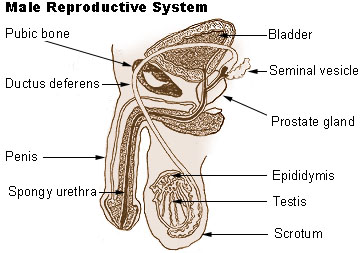Now I don’t know about you, but I had to put a condom on a banana in my high school sex education class. Probably the most awkward thing a 15-year-old could have experienced in a classroom full of hormonal teenagers. The school system had good intentions though, as they wanted to educate teens on safe sex and prevent unwanted pregnancies at a young age. Despite this, even into later adult years, preventing pregnancy is a common issue amongst sexually active individuals who do not want children or are not ready to have children. Not everyone wants to be like Darth Vader and claim that they are the father.
Let’s Talk About Sex Baby
Contraception, also known as birth control, has been used for many centuries to prevent union of the sperm and egg, thus preventing pregnancy. There are many types of contraceptives that work as hormones or physical barriers, and these together are effective at protecting against pregnancy and sexually transmitted diseases.
A sperm cell fertilizing an egg cell. Author Unknown. Public Domain.
Women have twelve options for birth control. Currently, the types of birth control for men are abstinence, condoms, outercourse, vasectomy, and withdrawl. Some people have argued that Crocs are also a form of birth control, but I will leave that up to you to decide. Anyway, the point that I am trying make is that men have far less effective options for birth control than women. (I mean withdrawl, seriously?) While contraceptives are usually centered around the female, there has recently been more research into male birth control, allowing men to take charge of their fertility. So instead of preventing the egg from being released via some forms of birth control, scientists are working on decreasing the effectiveness or the flow of sperm. Makes more sense to unload the gun than to wear a bullet proof vest, don’t you think?
Sperm is a haploid gamete that males produce and contribute to the creation of a new little person. Sperm consists of a head, mid-piece, and tail. The head contains an acrosomal vesicle that contains enzymes to help the sperm penetrate the egg to allow for fertilization. There are many ways for males of increase fertility via increasing the effectiveness and efficiency of their sperm when looking to reproduce, but there are times when a man may wish to weaken his sperm temporarily or maybe altogether.
Diagram of a human sperm cell (modified) by Mariana Ruiz Villarreal. Public Domain.
Possible New Methods of Stopping the Baby Train
As noted earlier, women have the ability to take a hormonal pill, injection, or patch to decrease their fertility temporarily. A hormonal approach was also taken as a potential method of birth control for men. A study showed that men could take birth control shots to prevent pregnancy in their female partners. The shots included the hormones progestogen and testosterone to prevent spermatogenesis from occurring. The researchers injected these hormones into healthy men, aged 18-45 years, with normal reproductive states. The injections were shown to be 96% effective at preventing pregnancy in the female partners of the males. This is not as effective as female hormone birth control pills for women, which are 99% effective. However, individuals had to stop receiving injections before the proposed timeline of the study due to the severity of the side effects that were resulting. As a result, the researchers are still looking for the right combination of progestogen and testosterone to minimize the side effects, which included injection site pain, muscle pain, increased libido, acne, depression, and other mood disorders.
Diagram of a cross-section of the male reproductive system by US Federal Government/National Cancer Institute. Public Domain.
In India, there was a different approach taken by researchers. As an outcome, a biomedical engineer in India developed RISUG (Reversible Inhibition of Sperm Under Guidance), and this involves the injection of a gel polymer into the ductus deferens, which is what sperm flows through to exit the male body. The gel polymer works like a cheese grater, essentially killing your sperm as it travels through the gel. An American company has brought the idea RISUG to North America under the name Vasalgel.
Vasalgel is a new, long-acting contraceptive for males. It is non-hormonal and more reversible than the traditional vasectomy. A vasectomy is when the ductus deferens of each testicle is clamped or cut, and therefore it is considered a permanent method of birth control. However, with Vasalgel, a gel is injected into the ductus deferens and acts as a physical barrier, blocking the sperm from swimming through and being released. This is a different mechanism compared to RISUG mentioned earlier. Click here for an explanation of the mechanism of Vasalgel with pictures. Moreover, a recent study has showed Vasalgel to be effective at preventing pregnancy in monkeys, so it is likely that it may work on humans as well. Okay, so what’s the hold up now then? Why are men not lining up to get Vasalgel injected into them? Well there are actually complications to having Vasalgel available on the market, such as dealing with big pharmaceutical companies and having successful clinical trials.
So while it looks like male contraceptives are coming in the future, I wouldn’t throw out that box of condoms just yet. There is still a long, hard, and maybe erect road ahead to having an approved method of birth control on the market for men. This may be an injection of hormones or an injection of a gel-polymer. Who knows, but I guess we will have to see which one comes first (pun intended).




Recent Comments